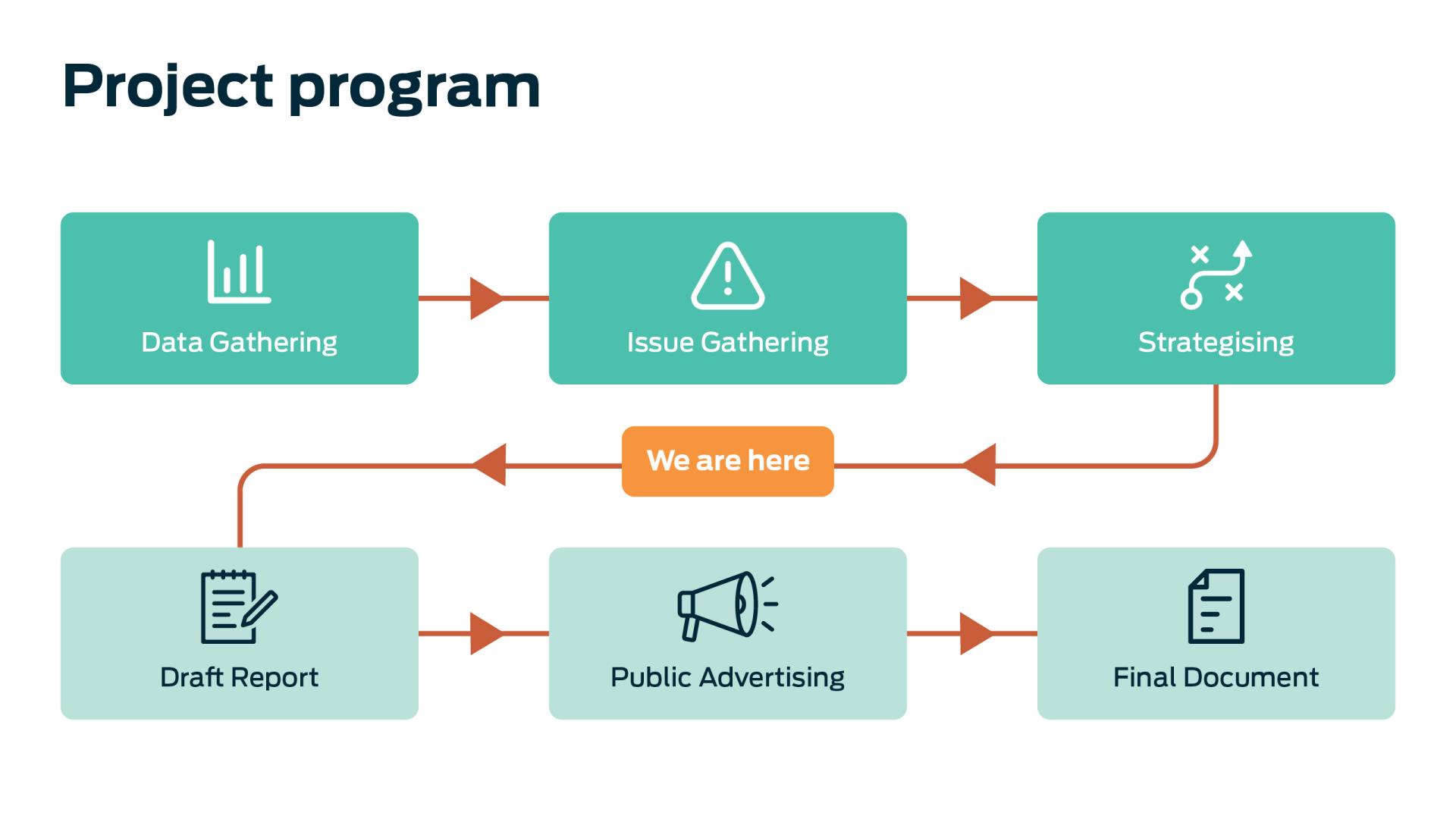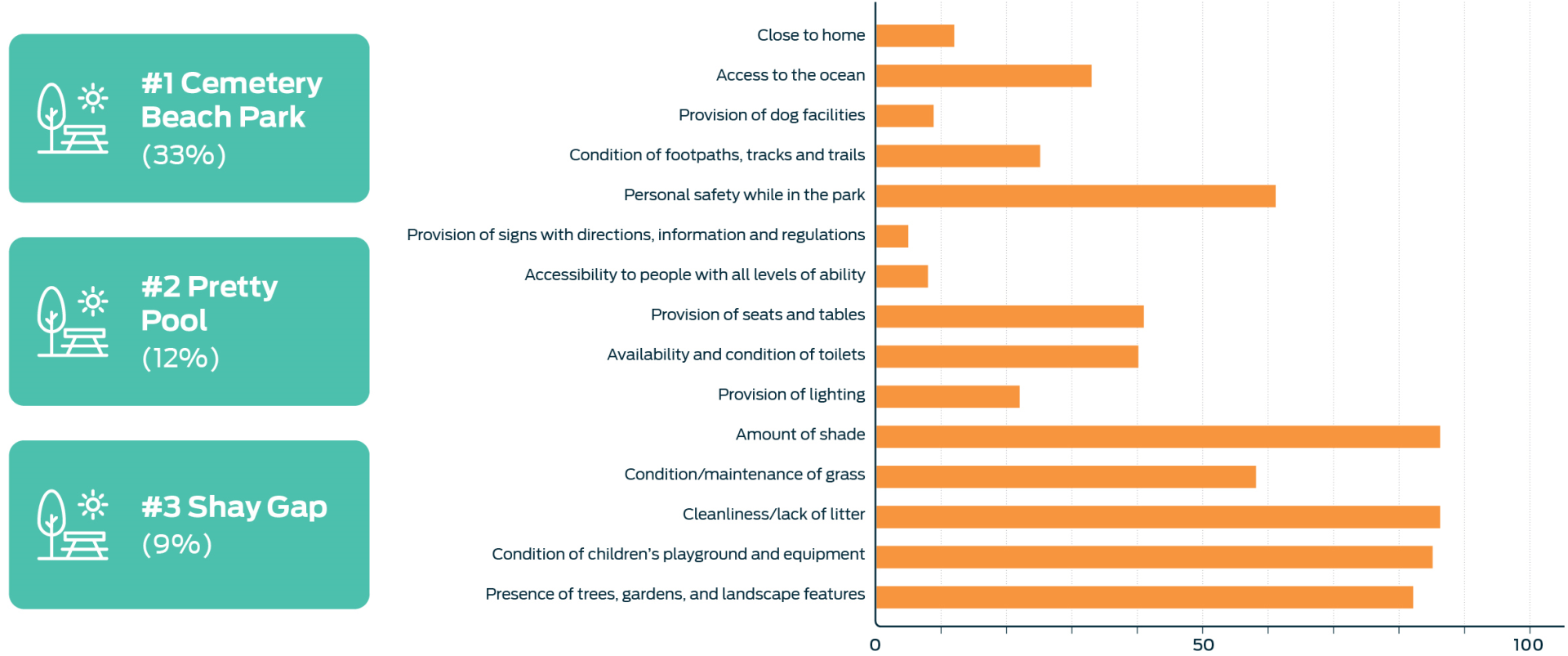

Public Open Space and Street Tree Strategy
The Town of Port Hedland is embarking on an exciting new project to review its Public Open Space and Street Tree Strategy to guide how we might better protect, manage and improve our public open spaces and street trees now and into the future.
Public open spaces are generally described as land set aside for the purpose of public enjoyment and for the protection of unique, environmental, social and cultural values for existing and future generations. In Hedland, our open space network is made up of public parks, streets, play spaces, natural areas of bushland and the foreshore.
What’s Happening Now
The Town has gathered data to understand how the Hedland community and visitors use our parks and other public open spaces. Understanding this will help us better plan for them to be enjoyed for many years to come.

Survey and Engagement Findings
How are people in Hedland recreating?

What are our favourite parks & why are we choosing them?

What does the community think we do well?

What does the community think we don't do well?

Where should we focus greening efforts?

Next steps
We have collated the data from the community and park audits to develop strategies for improving our public open space network.
Next steps include:
- drafting the Public Open Space and Street Tree Strategy
- inviting the community to check that the draft strategy reflects their needs and offer the opportunity to provide comment.
Frequently asked questions
What is Public Open Space?
Public open space (POS) is generally described as land set aside for the purpose of public enjoyment and protection of unique, environmental, social and cultural values for existing and future generations.
Public Open Space (POS) provides many essential benefits including enhancing local neighbourhoods, people’s lifestyles and improving health outcomes. POS takes many forms and serves a range of functions but are typically identified as a park.
Public open space (POS) describes land that is freely accessible by the community, for a variety of purposes. Most typically, public open space is used to describe parks.
We have a number of public open spaces, including but not limited to: parks, reserves, sporting grounds, foreshore and bushland.
The purpose of open space is to encourage a range of activities including walking, cycling, dog walking, social activities, informal sporting activity, play spaces, structured sport, bushland and events.
The most common use of POS is for recreational purposes, whether that be for active use, such as sport, informal play or events or more passive activities like walking, picnics or bird watching. POS can also be used to house community buildings or for other community purposes like bushland conservation and stormwater drainage.
Why do we need a public open strategy?
The purpose of the Public Open Space Strategy is to provide strategic direction and a framework to guide the management of open space. A strategy will help us manage where, when and how public space is made available to the community.
The Town has a Public Open Space Strategy that was prepared in 2019. Since then, the planning system has changed enough that this document is now out of date. We need to update this to reflect these changes, and are making the most of this opportunity to review the strategy as a whole and include a street tree plan into the strategy.
What does a Public Open Space Strategy Consider?
What does a Public Open Space Strategy Consider?
It involves assessing the existing public open space network, current use issues and limitations, and understanding community values. It includes planning ahead for the provision and design of public open space to meet the needs of our growing community to assist us to deliver a cohesive, linked and well-managed system that meet a range of current and future needs.
Key considerations include:
- Ensuring equitable access to open space for residents, workers and visitors to the Town
- Meeting often-competing community demands for public open space
- The importance public open space plays in urban environments to sustain and improve both mental and physical health and well-being and provide opportunities for social interaction and cohesion
- The impacts of climate change, urban heat island effect and extreme weather conditions as well as resilience and adaptation strategies to mitigate their effects.
It is expected that a Public Open Space Strategy will provide recommendations and guidance on:
- Addressing gaps in access to open space and in provision for particular types and functions of public open space
- Levels of maintenance, servicing and infrastructure (weighing up likely usage and potential costs to the rate payer
- Funding mechanisms for future public open space works.
- Prioritising public open space works across the municipality.
Who can I speak to about this project?
There will be lots of opportunities to be involved in this project. Check back on this web page regularly to get updates on upcoming events.
Contact Karli Beresford, Senior Strategic Planner at kberesford@porthedland.wa.gov.au or via (08) 911 5000 and register your interest for regular updates on the project.